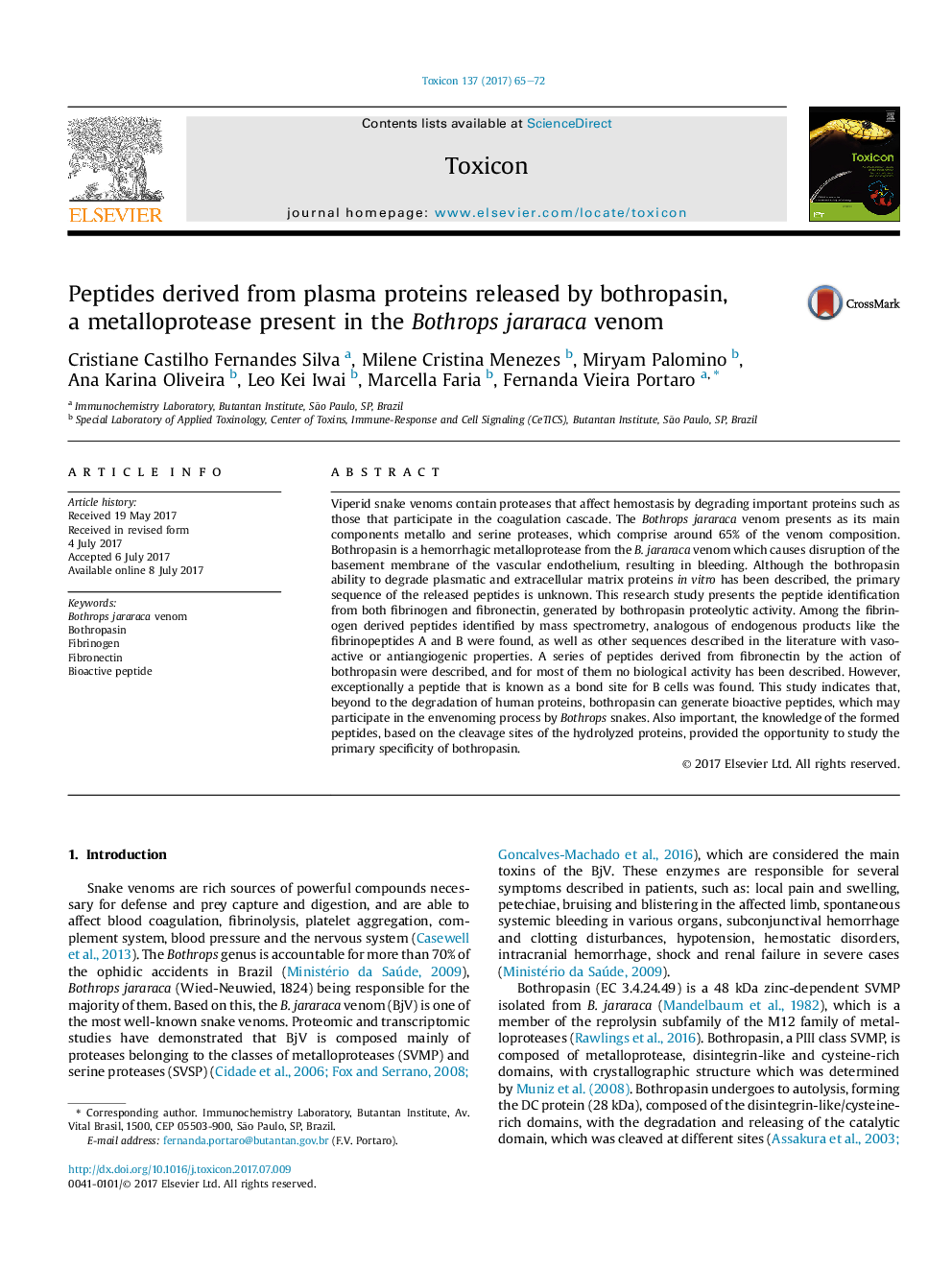| Article ID | Journal | Published Year | Pages | File Type |
|---|---|---|---|---|
| 5519281 | Toxicon | 2017 | 8 Pages |
â¢Bothropasin, a hemorrhagic metalloprotease from Bothrops jararaca venom, cleaves plasma and extracellular matrix proteins.â¢133 peptides from fibrinogen and fibronectin generated by bothropasin were identified.â¢Bothropasin releases from these proteins some bioactive peptides already characterized in the literature.â¢The sequences found provided information about the bothropasin primary specificity to its substrates recognition.
Viperid snake venoms contain proteases that affect hemostasis by degrading important proteins such as those that participate in the coagulation cascade. The Bothrops jararaca venom presents as its main components metallo and serine proteases, which comprise around 65% of the venom composition. Bothropasin is a hemorrhagic metalloprotease from the B. jararaca venom which causes disruption of the basement membrane of the vascular endothelium, resulting in bleeding. Although the bothropasin ability to degrade plasmatic and extracellular matrix proteins in vitro has been described, the primary sequence of the released peptides is unknown. This research study presents the peptide identification from both fibrinogen and fibronectin, generated by bothropasin proteolytic activity. Among the fibrinogen derived peptides identified by mass spectrometry, analogous of endogenous products like the fibrinopeptides A and B were found, as well as other sequences described in the literature with vasoactive or antiangiogenic properties. A series of peptides derived from fibronectin by the action of bothropasin were described, and for most of them no biological activity has been described. However, exceptionally a peptide that is known as a bond site for B cells was found. This study indicates that, beyond to the degradation of human proteins, bothropasin can generate bioactive peptides, which may participate in the envenoming process by Bothrops snakes. Also important, the knowledge of the formed peptides, based on the cleavage sites of the hydrolyzed proteins, provided the opportunity to study the primary specificity of bothropasin.
